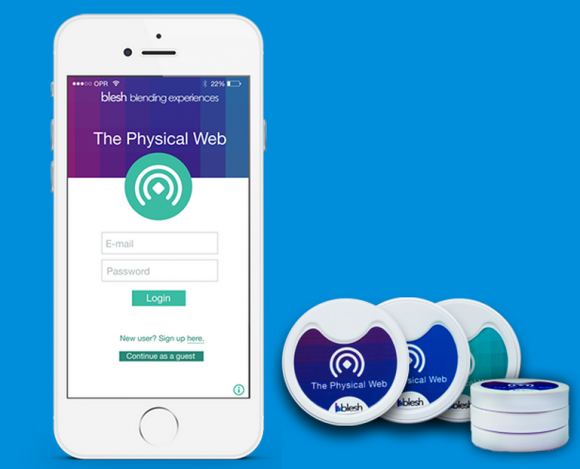aNewDomain – Ever hear of beacon technology? If not, you will shortly. According to Cooper Smith of Business Insider, fully a third of the Top 100 retailers in the U.S. have plans to employ the technology by the end of 2015. Furthermore, 4.5 million of these “beacons” will be operational by 2018. But what is it? I took a closer look.
Retail Technology
But what exactly is beacon technology? Industry experts have called it the most important advancement in retail shopping since the credit card reader. Simply put, beacons are programmed to broadcast relevant information (such as sale prices and product descriptions) when consumers are in the vicinity. It’s technology that helps both consumers and retailers.
But beacon technology isn’t just for shopping. In October 2014 the Physical Web project announced its desire to make physical objects smart. New beacon technology fits comfortably within the organization’s agenda.
![]()
Beacon Dreams
Beacons can be used for all sorts of things. They can pass along timely neighborhood announcements, and they can share important website info. They can also direct you to a specific museum, a handy bus stop or any shopping mall in the area. And, because these beacons are search-based, they eliminate the need for users to download a separate app on their smartphone. Physical Web beacons are also permission-based, which means that you can decide whether you want a beacon to ping your mobile device.
Imagine this: While on vacation you see a poster of a concert you’d like to attend, but since you’re new to the area, you don’t know where the venue is (or how to purchase tickets). Unlike iBeacons, which can only send fixed messages, the Physical Web — and corresponding beacons such as Blesh PW Beacon — provide location-based information on multiple levels. New beacon technology will give you a clickable link to a website with all the information you need about the show, like how to get there, how to buy tickets and anything else you might need.
And get this: the URL you receive will be dynamic. If the band moves to another venue or cancels its concert, you’ll receive updates as needed. These beacons eliminate the need for users to download a handful of specific apps.

The Internet of Things
Newly emerging beacon technology is convenient, no doubt about it. But how is it a game changer? The answer is simple. We are at the very beginning of user control over the Internet of Things. And that’s a big deal.
In secure environments, such as your home Intranet, beacons will enable you control your lights, your watering system and your window shades — even your Mr. Coffee machine. The future is getting closer and closer every day. And you won’t have to worry about privacy issues. Beacon connectivity is strictly opt-in. Your home system will be assisted by Intranet security to avoid nosy neighbors.
In the near future, says Scott Jenson, Project Lead for the Physical Web, everything will be just a tap away. Devrim Sonmez, the CEO of Blesh, agrees.
“While giving you more control over the objects in your life,” he says, “the Physical Web also provides much more serendipity and access to information wherever you are — you don’t have to have planned a need for that information and installed an app ahead of time.
We saw the potential of the Physical Web and its advantage over QR codes and NFC,” he says in conclusion. “We think that in time this will all be built into the OS of smartphones and even wearable.”
For aNewDomain, I’m Pat Meier-Johnson.
First Image: By Ferri Brodge (Own work) [CC BY-SA 4.0], via Wikimedia Commons
Second Image/Screenshot: Daniel Zweier
Featured Image: “DSC_4266 – Louisbourg Lighthouse” by Dennis Jarvis via Flickr Creative Commons













